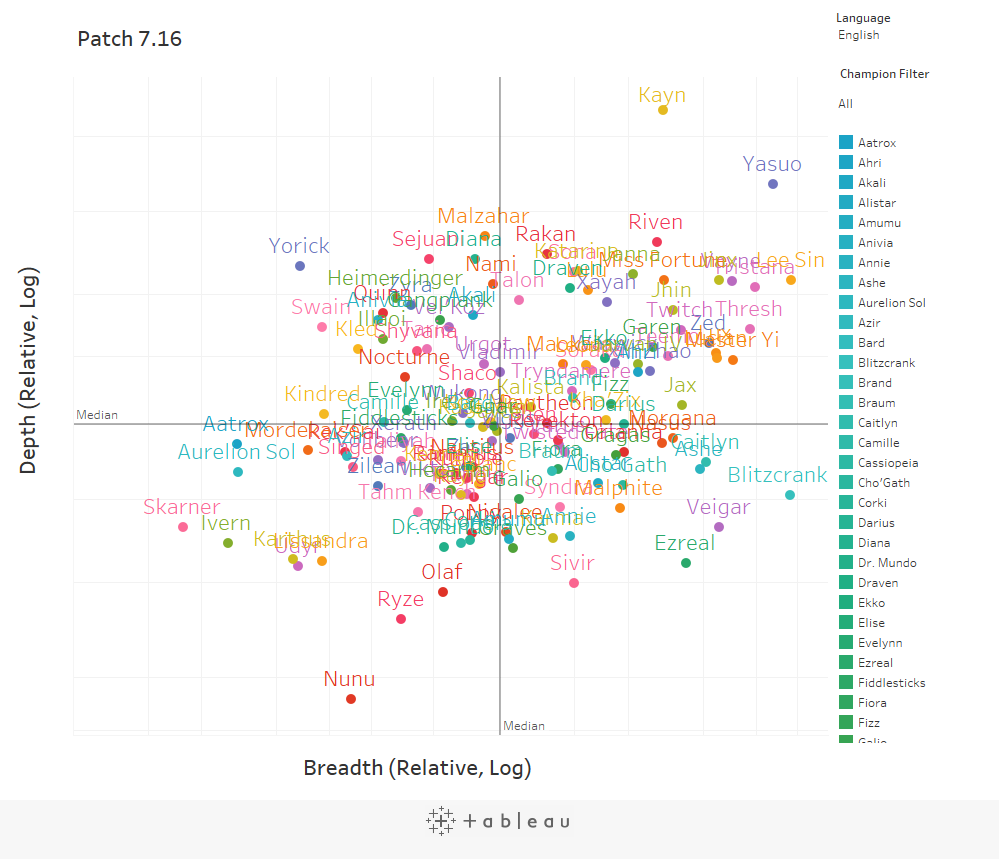Finding the Perfect Fit in League of Legends
“Curiosity’s going to kill one of us,” Lux, my main in League of Legends, would say every time I attacked an enemy. When I joined League back in 2016, I was an introvert that simply wanted a way to pass time. But over the past 8 years, League has done so much more than that. Its’ helped me rekindle old friendships, find a community that I belong in, and create countless late-night memories with friends. But most importantly, League has helped me as an introvert to express myself through the 161 champions in the game. When I was thinking of how I could apply Graph Theory to my personal life, I thought about how did I connect with Lux, the Lady of Luminosity? How did others in the community connect with their main champion? What was it that made them want to come back to the game?
Finding a gamer’s personal fit for a champion in League of Legends is calculated through graphs. In graph terms, analysts describe the process of analyzing champions as “champion popularity = breath x depth.” There are four categories within this graph: Unpopular champions, broad ones, niche picks, and popular champions. Broad champions are easy to learn so their breadth is high, niche champions are usually full of one-tricks, so their breadth is small but depth is high, and unpopular and popular champions are be self explanatory.
When I first joined League, I decided to main Lux because of her relatively simple kit of skill shots that have only one purpose, burst an enemy, which indicates her depth would be high. However, she’s become so popular over the years and is even offered as a starting champion to beginners, so her depth is high as well. Lux also has thirteen different skins, each reinventing her identity in different universes. These are all factors to why her depth is high, making her a popular champion, not just broad. League analysts don’t look at every match played through the match history, which can be used to create graphs like we’ve seen in class.

Lux’s Popularity
Riot uses these graphs to improve gameplay for champions that aren’t doing too well, and to determine which champions are most enjoyable to play. To no surprise, Lux is one of the popular champions. A majority of other champions are strongly tied and are cluttered in one area, with a little bit from all categories: popular, unpopular, niche, and broad. This means that their relevance to the game is important and what keep League going. If a champion is completely unpopular, what’s their purpose to the game if no one is playing them?

Network of champions, Nunu at the bottom
Outliers like Nunu at the bottom, are completely unpopular because of the data of both low depth and breadth. Nunu is weakly tied to Ryze, another unpopular champion, but has no ties to any other champion in terms of pick rate data. During patch 7.16, Nunu was simply outdated and picking him was considered troll. This lead to Riot reworking his visual fantasy to cater to a specific audience, increasing both breadth and depth. Now, his visual fantasy has a yeti and gameplay of throwing snowballs has made him strongly tied to the rest of champions, solidifying his place in the game. This graph network of champions helps Riot analyze what works in League, and what doesn’t. All these factors help create a unique fantasy and balanced gameplay for the game, which is why League has still been popular even after being out for over a decade.
So, Lux, curiosity didn’t kill me, but rather helped me find the reason why I became addicted to League for so many years.
Source: https://nexus.leagueoflegends.com/en-us/2017/11/champ-popularity-mixing-math-art/

